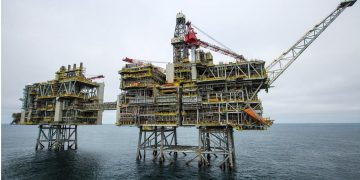On September 13th, tumultuous trading saw oil prices rise as concerns over limited fuel supply ahead of the winter season outweighed investor worries about declining demand in China, the world’s largest crude importer, and additional hikes in U.S. and European interest rates.
Brent crude had climbed 50 cents, or 0.5%, to $94.50 per barrel, while WTI crude had climbed 52 cents, or 0.6%, to $88.30. Early on in the session, both contracts decreased by more than $1.
Prices are still being supported by concerns about lower inventories. According to data provided by the Department of Energy, the Strategic Petroleum Reserve in the United States decreased by 8.4 million barrels to 434.1 million barrels in the week ending September 9, the lowest level since October 1984.
In order to combat the high fuel prices in the US, which have led to inflation, US President Joe Biden announced a plan in March to discharge 1 million barrels per day over the course of six months from the SPR.
According to a preliminary Reuters poll released on September 12th, U.S. commercial oil supplies are seen to have decreased for five weeks in a row, falling by about 200,000 barrels in the week leading up to September 9. Amarpreet Singh, an energy analyst at Barclays, stated in a note, they remain bullish on oil prices despite rising challenges to demand, as the supply side stays favorable with slower-than-expected U.S. output growth and a proactive OPEC+.
The likelihood of the Western nuclear agreement with Iran being revived remains remote. On September 12th, Germany voiced disappointment over Tehran’s rejection of European suggestions to resurrect the 2015 accord. A deal would be unlikely in the immediate future, according to US Secretary of State Antony Blinken.
Tuesday’s advances in oil prices were restrained by resurgent worries about declining global fuel consumption as China, the second-largest oil consumer in the world, continues to implement COVID-19 regulations.
According to official data, fewer trips were made over China’s three-day Mid-Autumn Festival break, and tourist earnings also decreased as a result of the COVID-19’s stringent regulations. On September 13th, the consumer price index statistics for the United States will be released. The Federal Reserve and the European Central Bank are prepared to raise interest rates further in order to combat inflation, even though it is anticipated that the core rate of inflation may have reached a peak.
If the U.S. CPI is higher than anticipated, the likelihood of the Fed maintaining aggressive rate hikes will be boosted, said an analyst at CMC Markets, Tina Teng. This might increase the value of the dollar relative to other world currencies, thus increasing the cost of oil priced in dollars for investors.



















































